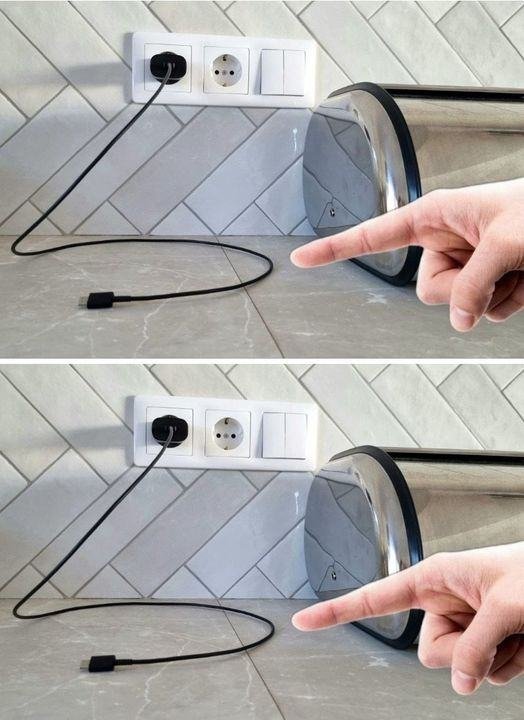ADVERTISEMENT
ng electronic waste, which poses a significant environmental challenge.
For Complete Cooking STEPS Please Head On Over To Next Page Or Open button (>) and don’t forget to SHARE with your Facebook friends
5. Overloading Electrical Outlets
When you leave chargers plugged in, it can increase the risk of overloading your electrical outlets, particularly if you’re using multiple devices and chargers at the same time. Plugging several chargers into the same outlet can cause the circuit to become overloaded, especially in older homes with outdated wiring.
Overloading outlets not only increases the risk of fire hazards but can also cause damage to your home’s electrical system, leading to costly repairs or, in extreme cases, electrical fires.
6. Safety in the Home: Kids and Pets
Leaving chargers plugged in—especially when they’re located at lower outlets or within reach of children and pets—can also create potential safety risks. Exposed wires or partially plugged-in chargers can be tempting to curious little hands or paws. If a child or pet chews on or plays with the charger, it could result in serious electric shocks, burns, or even fires. Additionally, chargers with frayed cords can pose a trip hazard or cause cuts and abrasions if someone comes into contact with them.
For safety purposes, it’s a good habit to unplug chargers and store them out of reach when not in use, particularly in households with young children or pets.
How to Avoid the Risks of Leaving Chargers Plugged In
Now that we know the risks, here are a few tips for avoiding potential hazards:
- Unplug chargers when not in use: The most effective way to eliminate the risks is to make a habit of unplugging your chargers once your device is fully charged or when they’re not in use.
- Use a power strip with an on/off switch: Instead of unplugging individual chargers, you can plug them into a power strip and simply turn off the power strip when not in use. This helps reduce the need to plug and unplug multiple devices regularly.
- Invest in quality chargers: Make sure to use certified and high-quality chargers that are built to withstand prolonged use and are equipped with safety mechanisms to prevent overheating or electrical failure.
- Use charging stations: Consider using a charging station or dock where all your devices are connected to a single outlet. When you’re done charging, simply unplug the entire station.
- Store chargers properly: Avoid leaving chargers plugged in when not in use, and store them safely out of reach of children or pets to prevent accidents.
Conclusion
While leaving chargers plugged in without a device might seem like an insignificant habit, it can actually pose serious risks—from fire hazards and wasted energy to electrical damage and environmental impact. By taking a few simple precautions—such as unplugging chargers when not in use, using power strips with switches, and investing in quality chargers—you can keep your home safer, save on electricity costs, and reduce your environmental footprint.
Remember: small changes in your charging habits can make a big difference in protecting both your home and your wallet. Unplugging chargers when they’re not needed is a simple yet effective way to stay safe and save energy in the long run.
